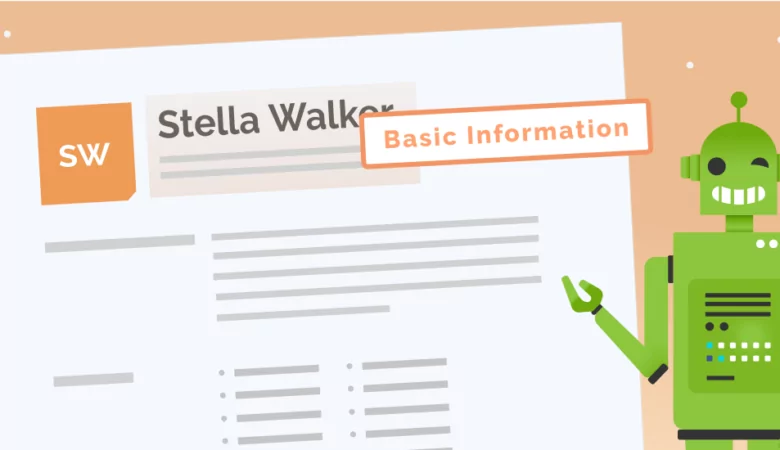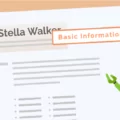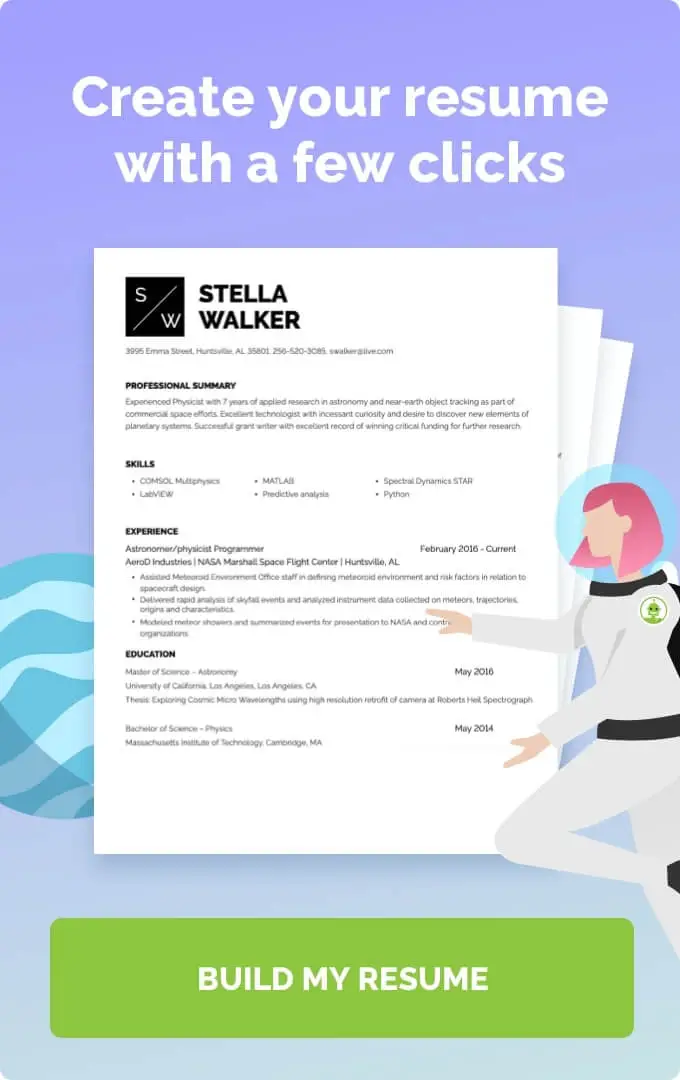Learn how to write and organize the perfect resume for any job with seven key elements that should always be included. Create the best resume for your career today with ResumeNerd.
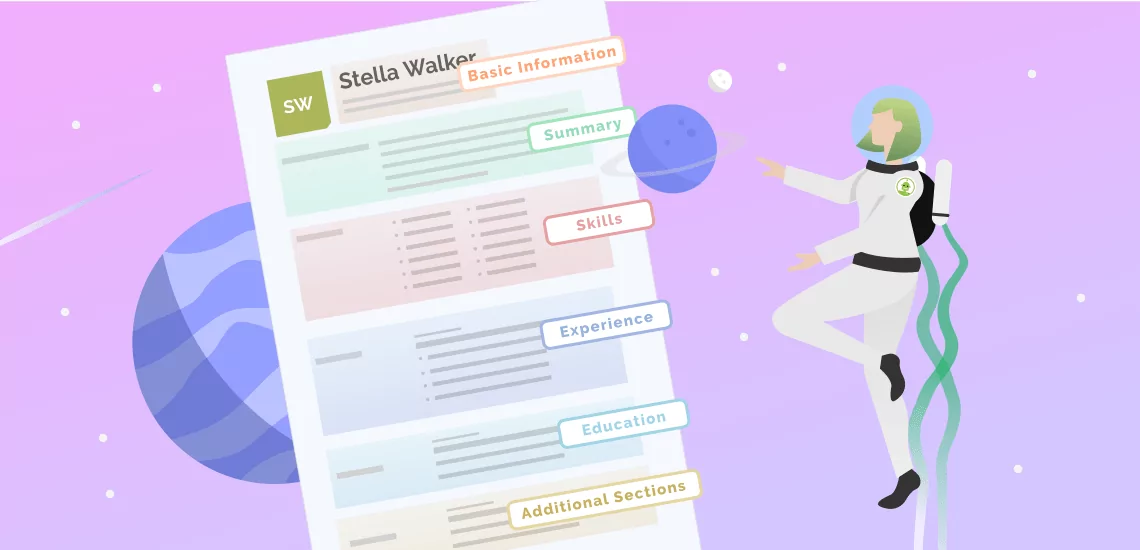
Learn How To Write the Seven Parts of a Perfect Resume
Key Parts Of A Resume To Remember In Your Job Search
A professional resume is made up of specific sections that recruiters will look for in order to determine who is the best candidate for a job. Knowing what these sections are and what order they should go in is the key to putting yourself ahead of the competition for your dream career. This guide will show you the parts of a resume you need to include as well as how to construct each resume section to a professional standard.
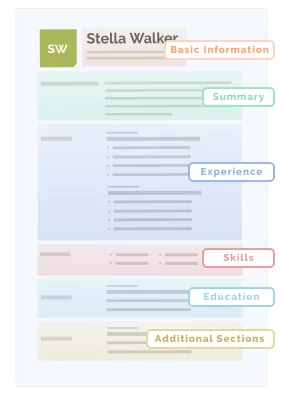
The Seven Parts of A Resume To Remember
A standard resume has seven parts. These sections are generally organized from most important to least important, although the exact order will vary depending on the resume format you choose.
-
Contact Information
Your contact information should be placed at the top of your resume in the header. Contact information should include:
- Your full name
- Phone number
- Email address
- Physical address (city and state of residence)
- Professional portfolio link (optional)
-
Resume summary or objective
The resume summary or objective is an introduction to your resume. Some job seekers overlook this section, but it can be a great way to get the attention of your potential employer. A summary features your top skills and past work accomplishments. An objective will focus on your key skills as well as your goals for the job if you get hired. Even an entry-level job applicant can write a great resume objective without having work experience.
-
Work Experience
Work experience or work history should include:
- The name of your employer
- Location
- Dates employed
- Bullet-point descriptions of your tasks and achievements
You can use bullet points to describe two or three of your most important tasks and achievements for each position. If you do not have an extensive work history, then you can use internships, volunteer work, or even academic projects to fill in this section. Refer to the job description you are applying for to get inspiration and keywords to use in this section.
-
Skills
Your skills section should always include both hard skills (technical knowledge and abilities) and soft skills (important personal traits such as attention to detail), no matter your job title. The ratio of technical skills to interpersonal skills may vary depending on what industry you are in. Include 8 to 12 skills in this section using bullet points. Always include your most relevant skills in the job description.
-
Education
Your education section should include:
- Highest level of education or training
- School name and location
- Honors received
You do not need to include your GPA in your education section. You can also include relevant coursework or memberships to academic clubs if it suits the job to which you are applying.
-
Achievements and awards
Achievements and awards can include:
- Employee of the month/year
- Publications you have been featured in or contributed to
- Events you have hosted
- Conferences you have spoken at
- Professional, academic, or community awards
- Significant projects or cases you have contributed to
Achievements and awards are not necessary but can help to enhance your resume and make you a more appealing candidate.
-
Certifications
Certifications are a great way to build up your resume if you are lacking in work experience. Many useful certifications can be obtained online in a short amount of time. A certification gives the hiring manager confirmation of your skills and shows that you are proactive in your career. Certifications can be industry-specific or used across a broad range of jobs, such as CPR or Microsoft Excel.
Tailor Your Resume To Every Job
You should always tailor your resume and cover letter to each new job you apply to. A hiring manager who receives thousands of applications for the same position will be able to recognize a generic resume from one that has been written specifically for the position. In addition, many recruiters use applicant tracking systems (ATS) to sort resumes before they read them. These systems will scan your resume for keywords or skills specific to the job posting. If you submit a generic resume, then your resume may never make it past the ATS to the hiring manager at all. This is why it is crucial to customize your resume for every job application.
FAQ: Parts of a Resume
All of these parts should fit on a one-page resume, provided you keep the content of each section short and concise. Use bullet points to describe your skills and work experience and only include the most recent and relevant information. For more help fitting every resume section onto one single page, use a resume builder or resume template to assist you.
The order the parts of your resume will go in depends on the resume format you choose as well as the layout of your resume. If you are applying to a job in a more creative field and you are using an infographic resume, then the order of your resume may be different than a classic chronological or functional format. Consider what format is best for your experience and industry, and then use resume examples to place your resume sections in the correct order.
Your cover letter and resume should be able to stand on their own as two separate documents in the event that they get separated. The hiring manager may choose to read one and not the other. Crucial details like your contact information should never be left off of your resume and should be placed in a section of your resume that is easily visible, such as the header. In some cases, you may be able to emphasize skills in different sections. For example, if you have an extensive work history, then you can feature important skills in your achievements. In this case, you may be able to save some room in your skills section.

